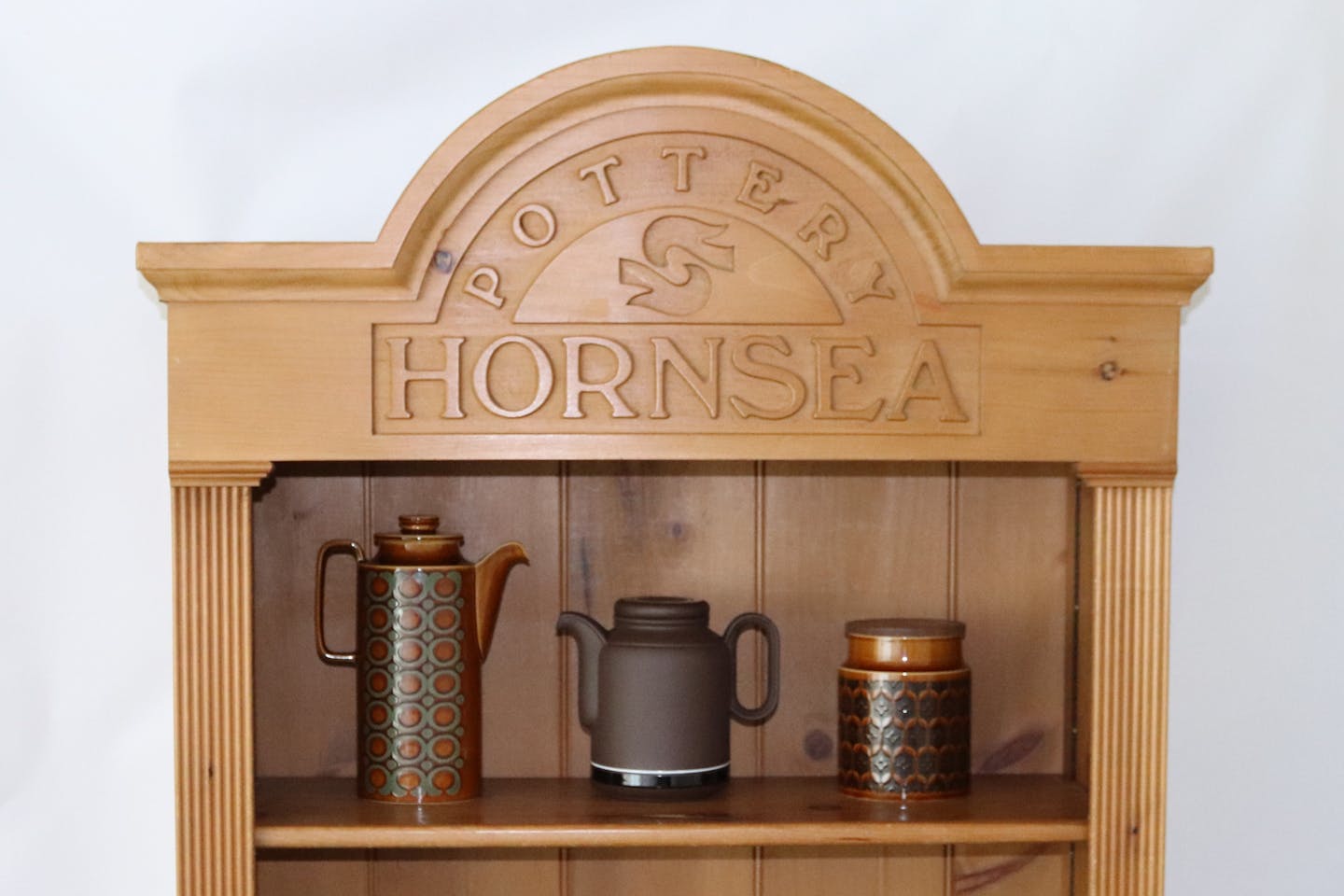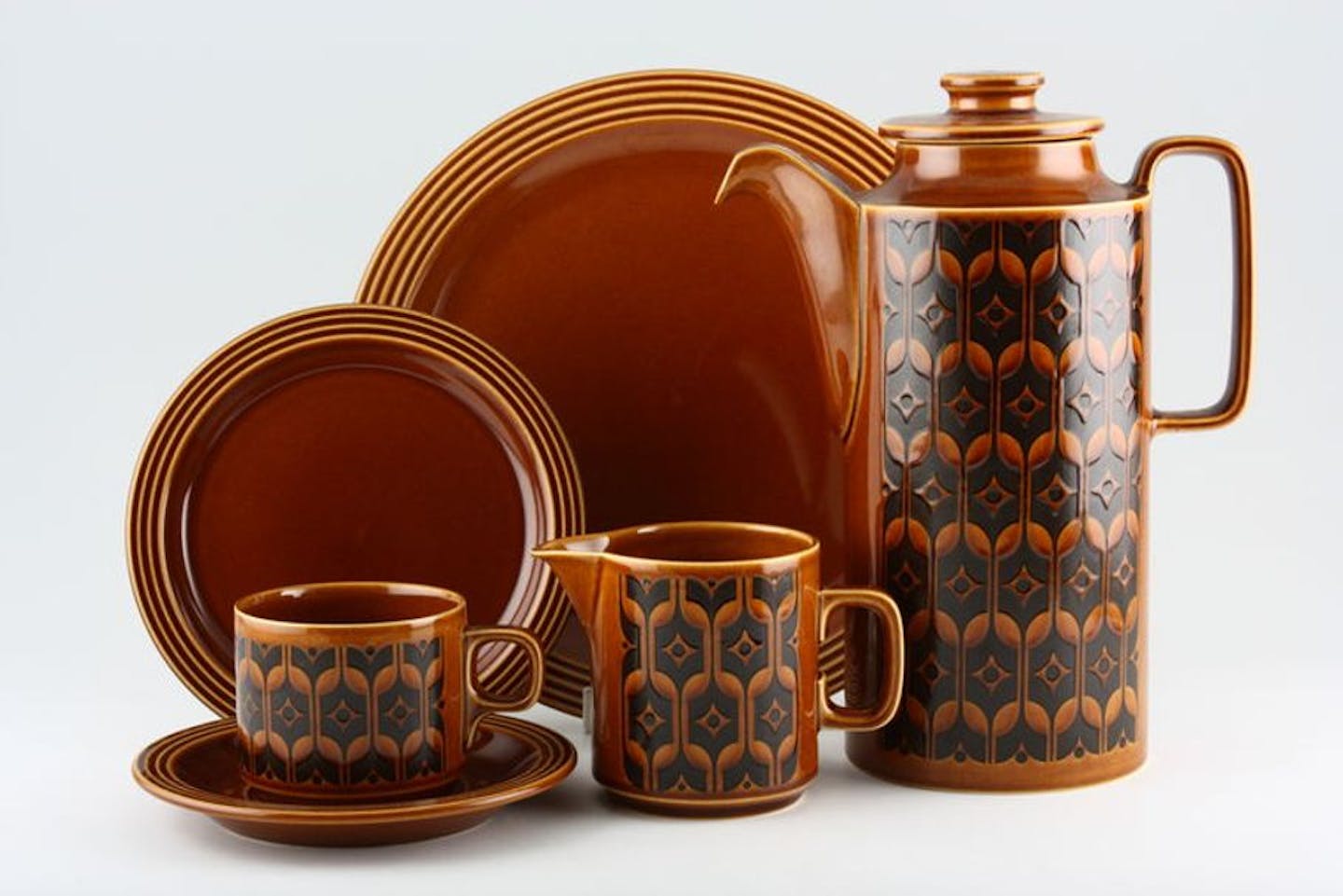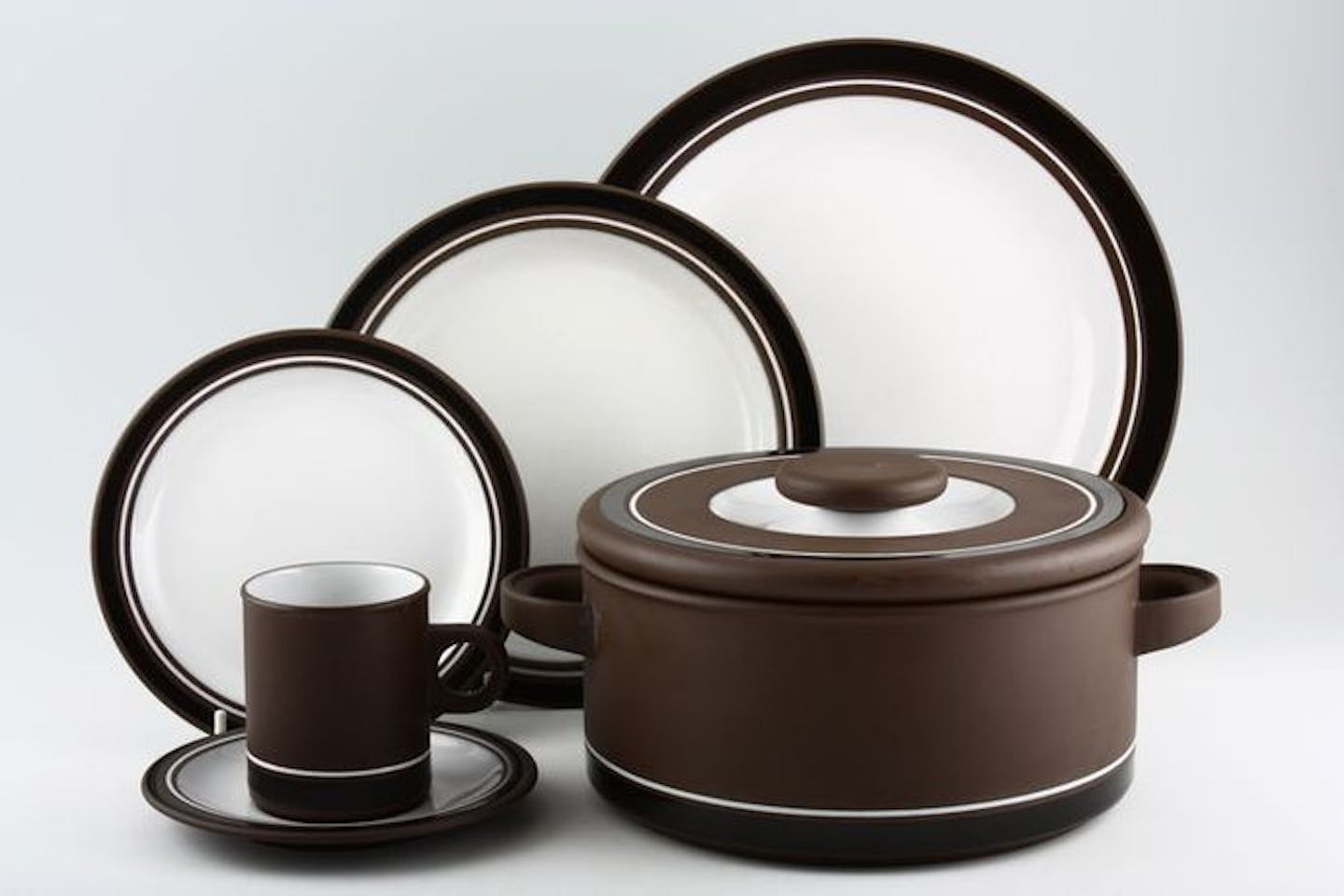Hornsea Pottery – Bold & Beautiful

Think 1960s and 70s tableware – and kitchen items, in general, from that era – and you probably picture the bold designs of Hornsea Heirloom and Bronte, distinctive for rich brown glazing and embossed patterns. Move on a few years to Hornsea Contrast, which used brown in a much more subtle, yet elegantly striking, manner.
Anyone and everyone with a love of this vintage look is likely to have owned, and might still be delighted to own, something by Hornsea. We take a look at three standout patterns from this world-renowned Yorkshire-based pottery manufacturer.

Hornsea Heirloom – Brown, launched in 1967, was Hornsea’s first complete range of tableware. This pattern introduced an entirely new glaze-resistant method of decoration, enabling its distinctive black link pattern to be screen printed directly onto the item’s surface and then for the glaze to be applied all over, but not adhere to the screen-printed sections. Popular within the collection are the kitchen storage jars, both named and un-named, that have rubber-sealed airtight polished wooden lids. Ubiquitous in kitchens forever more.

Equally popular was Hornsea Bronte (1972), named after Yorkshire’s most famous literary family. Yet another best-selling Heirloom derivative, Bronte presented the tactile effect of an embossed pattern and interesting variations in glaze colouring. What began as a collection limited to a tea set, coffee set, storage jar and mug was significantly extended to a full dinnerware collection that included tableware accessories, many designs of storage jar – even a plant pot.

With a look and feel described as distinctively masculine, Hornsea Contrast lived up to its name. Introduced in 1974, it quickly became Hornsea’s best-selling oven-to-table ware range the world over, its dark brown body accented by white, and a decorative black-and-white band around each piece. This collection was popular for its tough, non-porous surface and chip-resistance, brought about through high-temperature firing to vitrification (converting it to a glass-like substance) following by intense polishing.
Browse our replacement china stocks of Hornsea to locate your favourite pieces and keep your much-loved collections complete.
 GBP
GBP





















































































